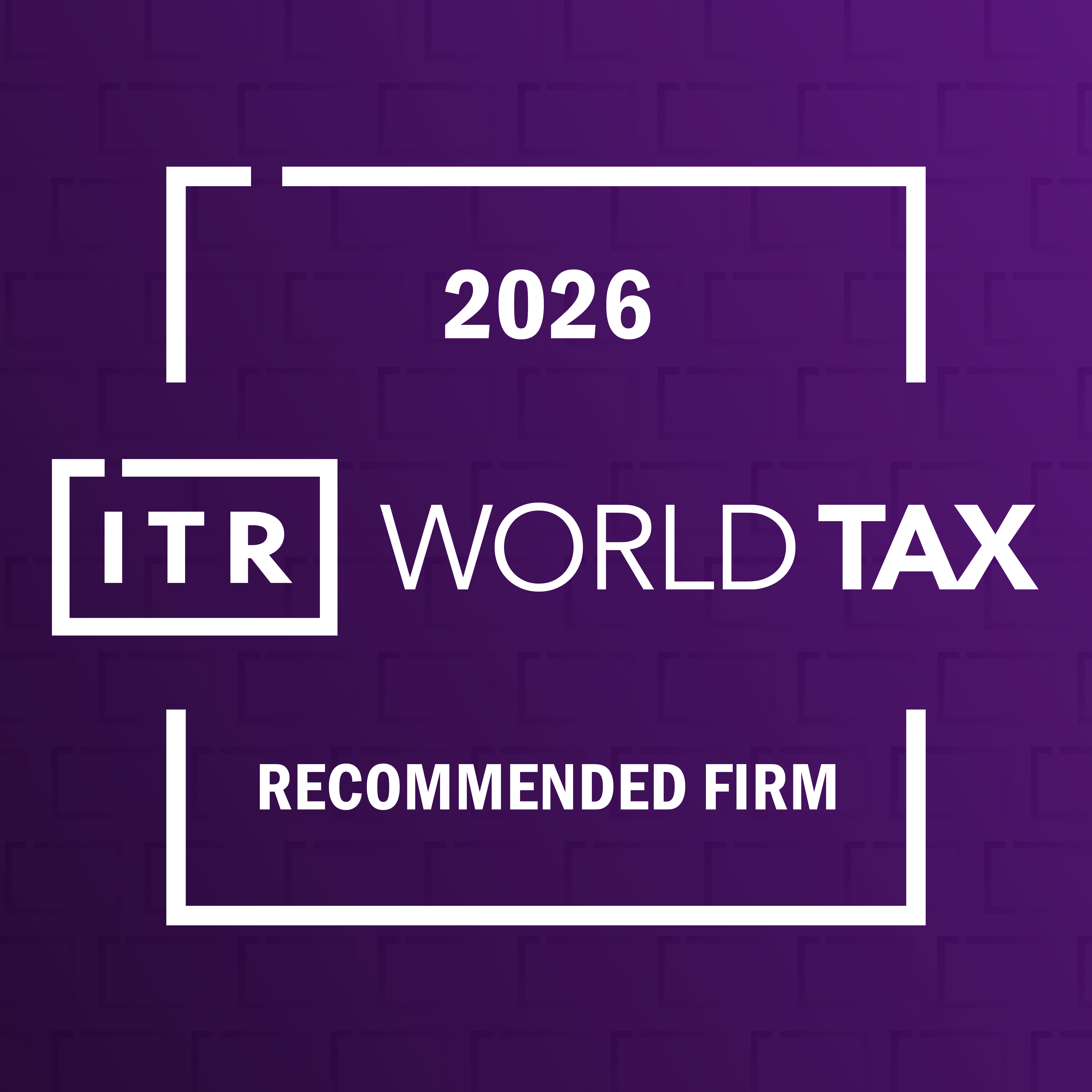Special Adjustment Mechanism for the Calculation of GloBE Income or Loss
Ferby, Sabila, Pasha dan Sherine
|

One of the crucial aspects in complying with the global minimum tax provisions is determining the GloBE Income or Loss.
According to the provisions in Minister of Finance Regulation No. 136 of 2024 (PMK 136/2024), to arrive at the GloBE Income or Loss, the net accounting profit or loss of a Constituent Entity must undergo general adjustments, elective adjustments, and special adjustments.
This article specifically explores the special adjustment mechanism for calculating GloBE Income or Loss, as stipulated in PMK 136/2024.
Under the regulation, special adjustments to the net accounting profit or loss of a Constituent Entity include:
- Adjustments for insurance companies;
- Adjustments for banks;
- Adjustments for international shipping income;
- Adjustments for Permanent Establishments (PEs); and
- Adjustments for Flow-through Entities.
The following sections will explain each type of special adjustment relevant to the calculation of GloBE Income or Loss.
1. Adjustment for Insurance Companies
This clause governs the calculation of adjustments for insurance companies related to taxes charged to policyholders that have been paid by the insurance company in relation to amounts returned to policyholders, which are recorded:
- After pre-tax profit or loss: The amount of the return equivalent to the tax charged to the policyholders is not included in the calculation of GloBE Income or Loss; and
- Before pre-tax profit or loss: The amount of the return equivalent to the tax charged to the policyholders is included in the calculation of GloBE Income or Loss.
2. Adjustment for Banks
PMK 136/2024 affirms that the banking sector is among those requiring special adjustments in the calculation of GloBE Income or Loss. Adjustments for banks are made in situations where amounts are recognized as:
- Increases in the equity of a Constituent Entity due to distributions paid or payable on Additional Tier 1 Capital instruments issued by the Constituent Entity – these must be treated as deductions; and
- Decreases in the equity of a Constituent Entity due to distributions received or receivable on Additional Tier 1 Capital instruments held by the Constituent Entity – these must be treated as additions.
Additional Tier 1 Capital instruments are defined as instruments that:
- Are issued by a Constituent Entity in accordance with regulatory requirements applicable in the banking sector;
- Are capable of being converted into equity or written down upon the occurrence of a pre-determined trigger event; and
- Are designed to absorb losses in times of financial distress.
3. Adjustment for International Shipping Income
As regulated under PMK 136/2024, in calculating GloBE Income or Loss, an MNE Group is required to make adjustments when international shipping income is present. The adjustment applies to an MNE Group that has: 1) International Shipping Income, and 2) Qualifying Ancillary International Shipping Income. The adjustment is made by excluding such income from the calculation of the GloBE Income or Loss of the Constituent Entity within the MNE Group in a particular country or jurisdiction.
Scope of International Shipping Income
International Shipping Income includes net income derived by a Constituent Entity from the following activities:
- Transportation of passengers or cargo by a ship operated in international traffic, whether the ship is owned, leased, or otherwise controlled by the Constituent Entity;
- Transportation of passengers or cargo by a ship operated in international traffic under a slot-chartering arrangement;
- Leasing of ships along with equipment, crew, and supplies used for transporting passengers or cargo in international traffic;
- Bareboat chartering (leasing of unmanned vessels) for the purpose of transporting passengers or cargo in international traffic, to another Constituent Entity;
- Participation in a pool, joint venture, or agency arrangement for international operations involving the transportation of passengers or cargo by ship in international traffic; and
- Sale of ships used for transporting passengers or cargo in international traffic, provided that the ship has been used by the Constituent Entity for at least one year.
Scope of Qualifying Ancillary International Shipping Income
Qualifying Ancillary International Shipping Income refers to net income earned by a Constituent Entity from activities primarily related to the transportation of passengers or cargo by ship in international traffic, including:
- Bareboat chartering (unmanned ship leasing) to other shipping companies not being a Constituent Entity, for a period not exceeding three years;
- Sale of tickets issued by another shipping company for domestic travel that forms part of an international journey;
- Short-term leasing and storage of containers, or penalties for late return of containers;
- Provision of services to other shipping companies by engineers, maintenance staff, cargo handlers, catering staff, or customer service personnel; and
- Investment income from investments that are an integral part of the shipping operation business in international traffic.
Adjustment Mechanism
Both International Shipping Income and Qualifying Ancillary International Shipping Income are excluded from the calculation of GloBE Income or Loss, provided that there is effective strategic or commercial management of the international shipping activities located in the same country or jurisdiction as the Constituent Entity.
Similarly, losses incurred by a Constituent Entity of the MNE Group from such business operations are also excluded under this provision.
Additionally, the amount of Qualifying Ancillary International Shipping Income that can be excluded is capped at 50% of the total International Shipping Income of all relevant Constituent Entities. Any excess above this threshold must be included in the GloBE Income calculation.
Furthermore, expenses related to the net income from the two types of activities may be classified as directly attributable expenses and/or indirectly attributable expenses.
In this context, directly attributable expenses shall be fully deducted from the income of the Constituent Entity. On the other hand, indirectly attributable expenses must be allocated proportionally based on the Constituent Entity’s income from the relevant activities in relation to its total income.
4. Adjustment for Permanent Establishments (PEs)
The net profit or loss used for a Permanent Establishment (PE) must be derived from financial statements that are entirely the property of the Constituent Entity (i.e., the PE itself). In other words, consolidated financial statements with the Main Entity may not be used.
However, if the Constituent Entity’s financial statements are prepared jointly with the Main Entity, the Constituent Entity must calculate its net accounting profit or loss in accordance with accounting standards, consistent with the preparation of consolidated financial statements.
Recording of PE’s Net Accounting Profit or Loss
- In the case of a PE whose income can be attributed to that PE, only the amount and items of income and expenses attributable to the PE shall be recorded, in accordance with the applicable tax treaty (P3B) or relevant domestic regulations.
- In the case of a PE located in a country that does not impose corporate income tax, but the PE is still subject to tax in that country, only the amount and items of income and expenses that should be attributed to the PE shall be recorded, based on the Arm’s Length Principle.
- In a situation where a PE conducts operational activities outside the country where it is located, the income to be recognized is the income excluded from the jurisdiction of the main entity and attributable to such activities. Meanwhile, the deductible expenses are expenses not deductible for tax purposes in the main entity’s jurisdiction and attributable to such operational activities.
Calculation of PE’s GloBE Income or Loss
For purposes of calculating GloBE Income or Loss, the GloBE loss of the PE will be recognized as an expense of the main entity, provided that the PE’s loss is treated as an expense for tax calculation purposes in the main entity’s jurisdiction and that the loss is not compensated.
Subsequently, the GloBE profit of the PE in the following year shall be recognized as the GloBE profit of the main entity, up to the amount of loss that has met the specified conditions. The PE’s net accounting profit or loss shall not be taken into account in determining the main entity’s GloBE profit or loss, except for the amount of loss that has satisfied the specified requirements.
5. Adjustment for Flow-Through Entities
A Flow-Through Entity is an entity whose entire income, expenses, profit, or loss is directly recognized by its owners, in accordance with the tax provisions of the country or jurisdiction where the entity is established. This excludes situations where the entity is treated as a domestic tax subject and is subject to Covered Taxes on its income or profit under the tax rules of another country or jurisdiction.
Scope of Flow-Through Entities
1. Tax Transparent Entity
In cases where the entire income, expenses, profit, or loss of a Flow-Through Entity is directly recognized by its owners in proportion to their ownership, based on the tax rules of the owner’s jurisdiction.
This also includes Constituent Entities that are not treated as domestic tax subjects and are not subject to Covered Taxes or Qualified Domestic Minimum Top-up Tax (QDMTT) based on their place of management, place of incorporation, or other criteria used to determine tax residency status.
Ownership interests in an Entity or Permanent Establishment (PE) that qualifies as a Constituent Entity must be treated as ownership through a tax-transparent structure, provided that such ownership interests are held indirectly through a chain of direct ownership by the owner, in proportion to the owner's interest in the Flow-Through Entity. Accordingly, the treatment of ownership through a tax-transparent structure applies so long as:
- The owner is located in a country or jurisdiction that treats the entity in such a way that its income, expenses, profit, or loss is not directly passed through to the owner under the tax rules of the owner's jurisdiction;
- The entity does not have a place of business in the country or jurisdiction where it is established; and
- The income, expenses, profit, or loss cannot be attributed to a Permanent Establishment.
The calculation of the GloBE profit or loss of a Constituent Entity that is a Flow-Through Entity is carried out by deducting the net accounting profit or loss of the Flow-Through Entity by the portion of net accounting profit or loss that is allocable to the owners, excluding any Group Entity that holds an ownership interest in the Flow-Through Entity directly or through a tax transparent structure, except in the following cases:
- The Ultimate Parent Entity is itself a Flow-Through Entity; or
- Any Flow-Through Entity owned by an Ultimate Parent Entity that is a Flow-Through Entity, either directly or through a Tax Transparent Structure.
Then, the amount of net accounting profit or loss from a Constituent Entity that is a Flow-Through Entity, after calculation, shall be allocated to:
- The Permanent Establishment (PE), in cases where the Constituent Entity (the Flow-Through Entity) conducts all or part of its business activities through a PE;
- The owners of the Constituent Entity, for the remaining net accounting profit or loss after allocation to the PE, in proportion to their ownership interest, if the Flow-Through Entity is a tax transparent entity that is not the Ultimate Parent Entity;
- The Flow-Through Entity itself, for the remaining net accounting profit or loss after allocation to the PE, if the Flow-Through Entity is a tax transparent entity that is the Ultimate Parent Entity or a reverse hybrid entity. This applies where the tax transparent entity is treated as the Ultimate Parent Entity of an MNE Group in cases where it is controlled by an entity that is excluded from GloBE.
These provisions must be applied separately for each ownership interest in the Flow-Through Entity.
2. Reverse Hybrid Entity
In the case where all income, expenses, profit, or loss of a Flow-Through Entity is not directly recognized by its owners until the profit is distributed to the owners, based on the tax laws of the country or jurisdiction where the owner is located. (ASP/KEN)
Disclaimer! This article is a personal opinion and does not reflect the policies of the institution where the author works.


